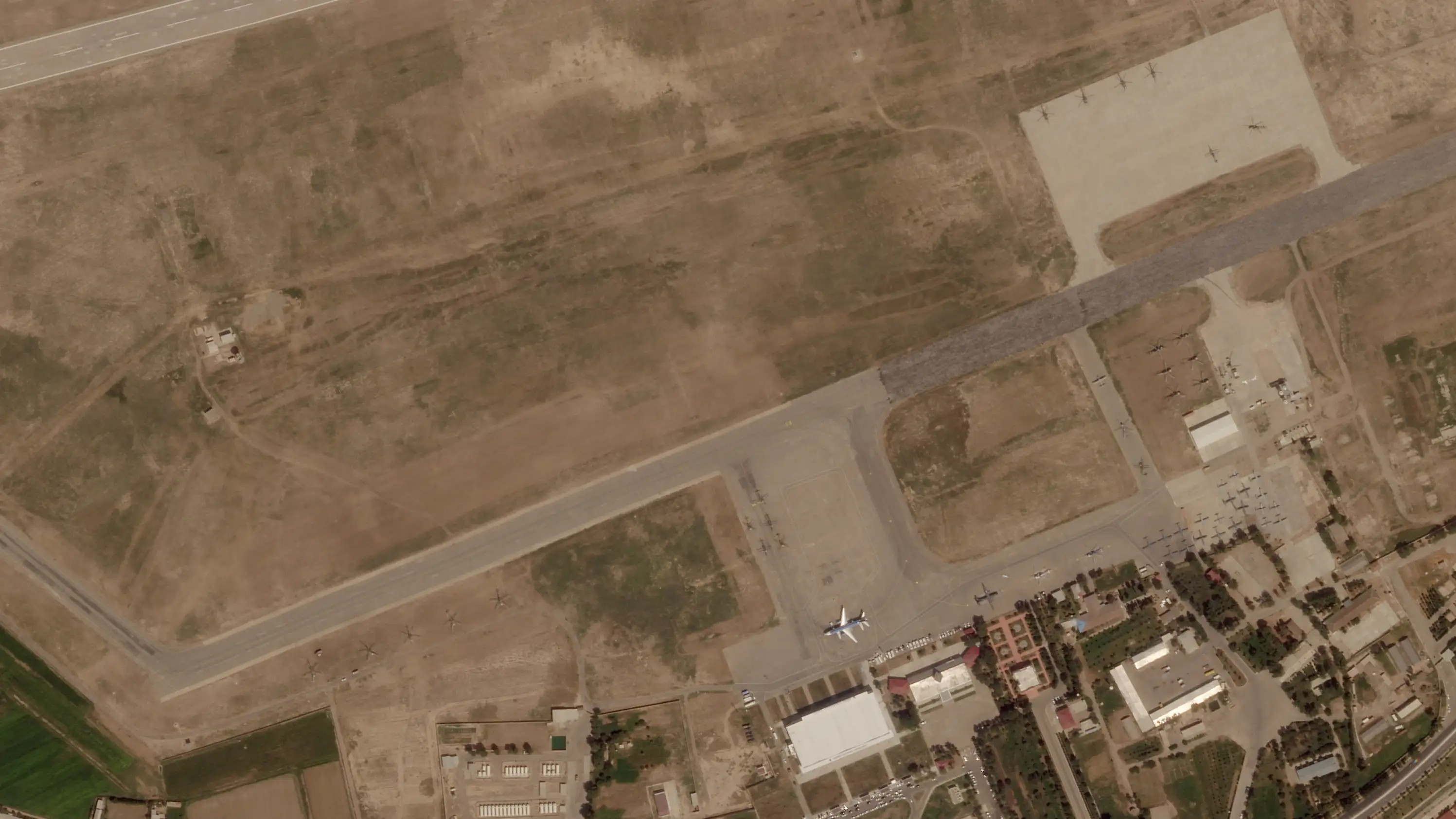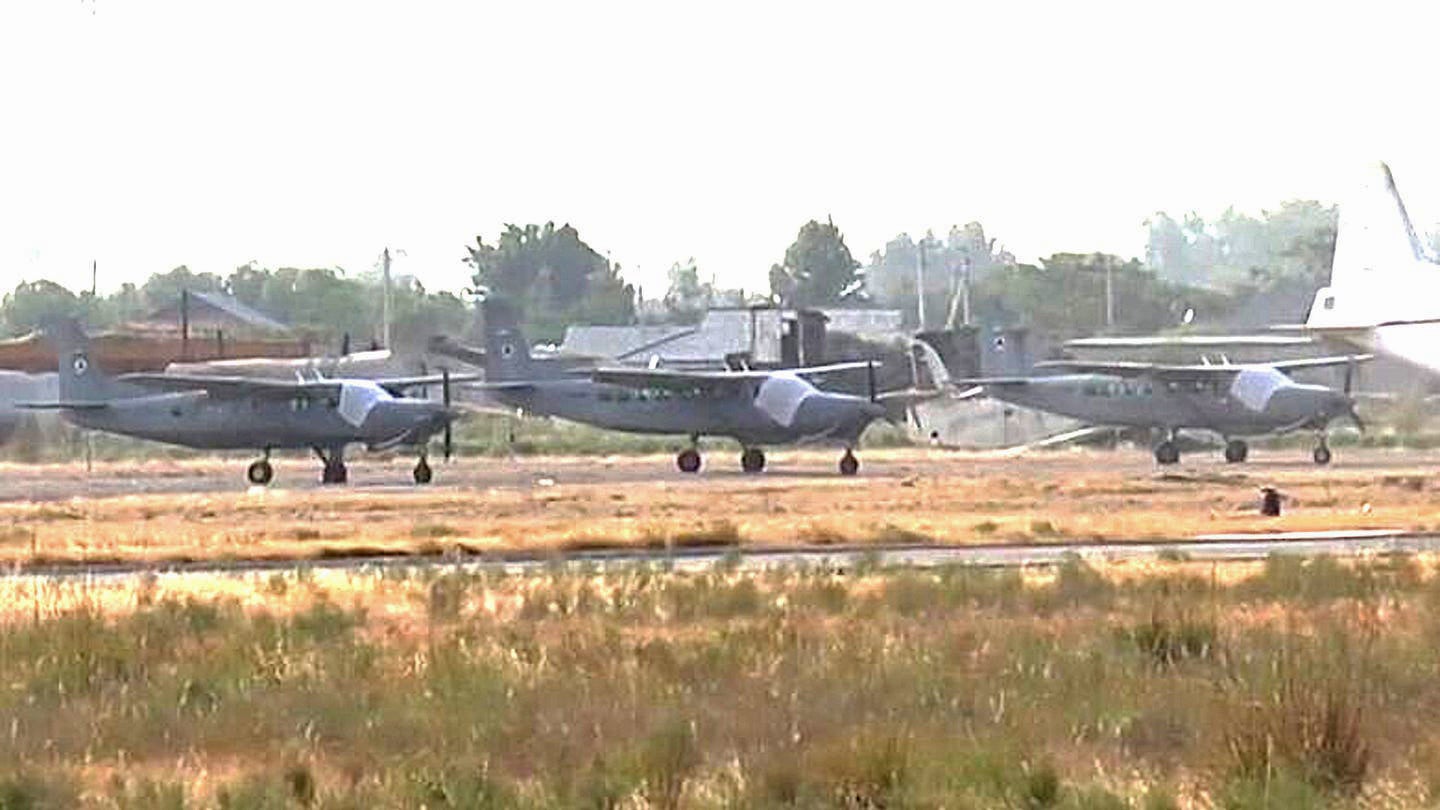Around 150 pilots and other personnel from the now-defunct Afghan Air Force are reportedly in the process of being relocated from Tajikistan to a third country with the help of the U.S. government. These individuals, including one woman who is very far along in her pregnancy, had fled Afghanistan in fixed-wing aircraft and helicopters as the Taliban swept to power in August. The fate of the aircraft that they brought with them, as well as others that belonged to the Afghan Air Force that are now in limbo elsewhere, remains uncertain.
Reuters
first reported earlier today that this group of Afghans had been set to depart from the airport in Tajikistan’s capital Dushanbe on a flight that the U.S. government had brokered, but that this had been delayed. It’s not clear if they have now left the country and, if so, where they are headed. Another group of former Afghan Air Force personnel who had escaped with their aircraft to neighboring Uzbekistan flew to the United Arab Emirates on another U.S.-arranged charter back in September. There is at least a hope among the individuals who fled to both Uzbekistan and Taijistakan that they will eventually get to the United States for permanent resettlement.
It’s unclear why the process of getting these individuals out of Tajikistan has been more complicated. The government in Dushanbe has been outspoken in its opposition to the Taliban since they returned to power earlier this year.
“We will get with [the] State [Department] right away to see if we can move this forward,” U.S. Secretary of Defense Lloyd Austin had told members of Congress in September when asked about this issue. “I share your concerns.”
Part of the issue for U.S. officials seeking to assist them has certainly been diplomatic hurdles due to the fact that the personnel are not American nationals. Authorities in Tajikistan had detained them upon their arrival, holding most of them at a remote sanatorium, and had reportedly taken away their identification documents, which would have been issued by an Afghan government that no longer exists.
“We are like prisoners here. Not even like refugees, not even like immigrants,” the pregnant former Afghan Air Force pilot had reportedly told Reuters in October, speaking to the outlet via a cellphone that was smuggled into the sanatorium. “We have no legal documents or way to buy something for ourselves.”
In addition to concerns about their treatment while in custody in Tajikistan, there have also been fears that they could be deported. Before the Taliban took over the country, it had been actively pursuing an assassination campaign targeting Afghan Air Force pilots. Many former members of the Afghan Air Force still in Afghanistan are now in hiding, fearing reprisals.
“I stood shoulder to shoulder with my American allies for five years — but now they have forgotten us,” a former Afghan Air Force Captain told The New York Times, according to a piece published this past weekend.
“Our life gets worse day by day,” another ex-Afghan Air Force officer told that newspaper. “We can’t stay in one place. We are always hiding — even our relatives don’t know where we are.”
Beyond the ultimate fate of Afghan Air Force pilots and other personnel who fled to Tajikistan, as well as Uzbekistan, what will happen to their aircraft remains to be seen. “Before the ANDSF [Afghan National Defense and Security Forces] disintegrated, AAF [Afghan Air Force] pilots reportedly flew about 25% of the total available aircraft inventory to Uzbekistan and Tajikistan to avoid Taliban capture,” according to the most recent quarterly report from the U.S. Special Inspector General for Afghanistan Reconstruction, or SIGAR. The aircraft that managed to escape to those countries includes a mix of fixed-wing types and helicopters.

On the fixed-wing side of things, there are A-29 light attack aircraft, AC-208 armed light utility planes, Cessna 208 Caravan small transports, and Pilatus PC-12NG intelligence, surveillance, and reconnaissance platforms. The helicopters include UH-60A+ Black Hawk utility types and Mi-8/Mi-17 Hip-type transports. It is unclear if any of the Afghan Air Force’s shorter-range Hughes 530F armed light scout helicopters were able to escape.
“I would appreciate it if we could put that in writing to both of those countries that the equipment belongs to the U.S. — not to Afghanistan,” Rep. Austin Scott, a Georgia Republican, had told Secretary of Defense Austin at the September hearing. While virtually all the Afghan Air Force’s aircraft were bought by the U.S. government, it’s not clear if they are actually legally U.S. government property now. It is extremely likely that American officials will use all avenues available to them to block any transfers to the Taliban.
Similar legal questions will apply to ex-Afghan Air Force aircraft that are presently in the United States or other countries.
“In addition to the AAF fleet in Afghanistan, 37 used UH-60 helicopters purchased from the U.S. Army for the AAF in 2017–2018 but not yet refurbished and upgraded were held in strategic reserve in the United States,” according to SIGAR’s latest quarterly report. Two 530Fs were “delivered in August, but DOD was able to extract them from HKIA [Hamid Karzai International Airport in Kabul].”

“In addition, at least six aircraft (three Mi-17s and UH-60s) were in a third country or the United States for maintenance,” the report added. “The Afghan media reported that 25 helicopters were out of country for repair.”
The War Zone has reached out to the Pentagon about the current status of any of these aircraft, including who officially owns them, but has not yet received a response.
At least the ordeal that Afghan Air Force personnel had faced after fleeing to Tajikistan now appears to be almost over, if those individuals have not already left that country.
Contact the author: joe@thedrive.com
